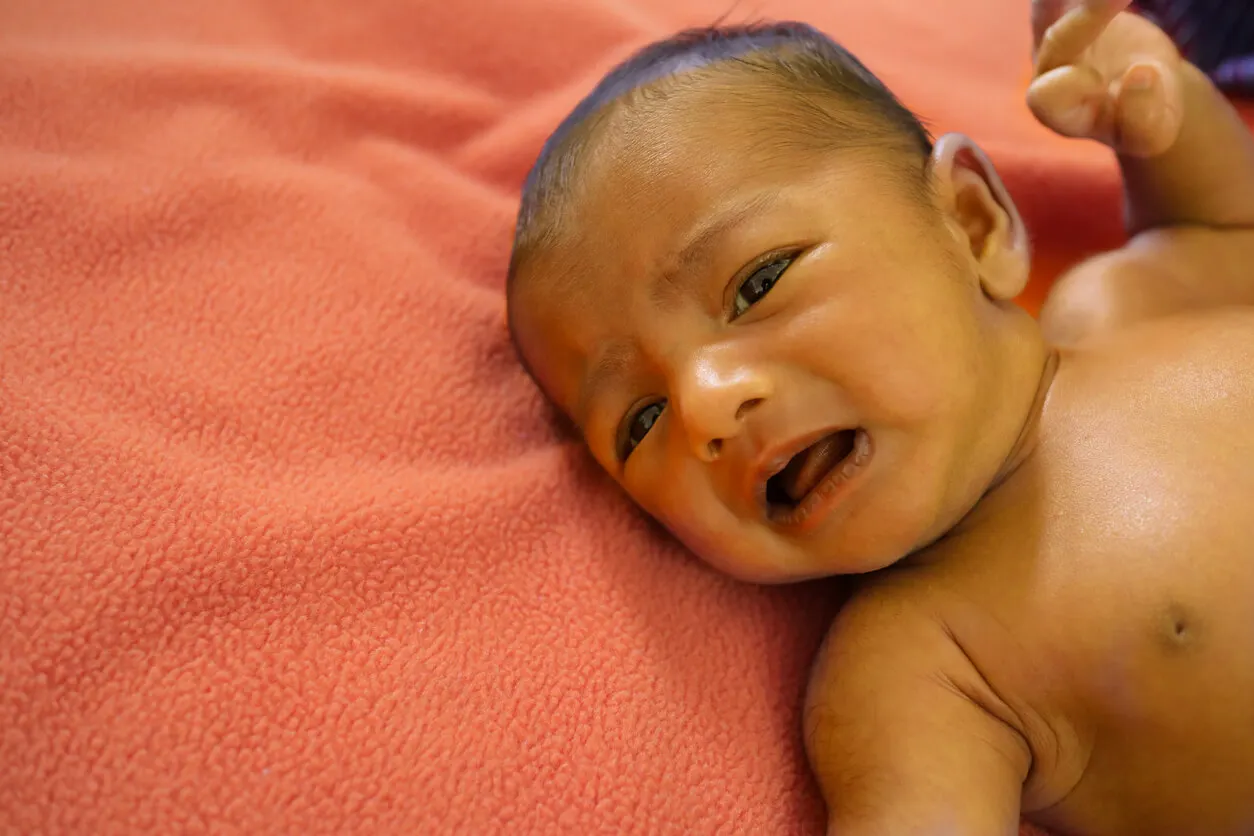What Can Change the Color of Infants' Stool?

The color of infants’ stool may change for a variety of reasons. Sometimes the change is due to natural factors, such as feeding. Other times it’s a sign of a health problem.
You should pay attention to the change in stool color in infants when it occurs along with other symptoms, such as crying, vomiting, or fever. It’s also important to pay attention to the texture and consistency of the stool.
The different colors of infants’ stool
Changes in the color of infants’ stools are often associated with the speed at which food passes through their intestines. There are also times when they’re a sign of a problem. Let’s take a look at what each of the various shades can mean.
Black feces
It’s common for newborns to have black stool with a tar-like consistency. This is known as meconium and usually lasts about two days after birth. Later, if the baby eats something high in iron, the stool may turn blackish as well. There is nothing to worry about.
Outside of these cases, and when the stool color becomes very black, it could be a sign of gastrointestinal bleeding, especially if the consistency is similar to coffee grounds.
Mustard yellow
This is the normal color of stool in nursing infants. It usually becomes this color after the meconium disappears.
It is common in infants who are breastfed only. Sometimes, the stool may appear darker, almost turning brown.
Light yellow
The use of formula may cause the stool to become a slightly lighter color. Also, the composition of the baby’s intestinal bacterial flora sometimes makes the yellow of the stool fainter. If the consistency is very liquid, it could indicate that the child has diarrhea.

Orange
Sometimes the color of infants’ stools may turn orange. This happens in infants who are only breastfed or formula-fed. This is due to pigments acquired in the digestive tract. It should only cause concern if you notice bothersome symptoms in the child.
Red
If the baby has eaten dark red foods or drinks, the stool may appear reddish. This happens with beet or tomato juice. However, if such foods have not been eaten before, pay close attention.
The hue may be due to the presence of blood in the stool. It may also be a manifestation of a milk allergy or anal fissure. A pediatrician should be consulted as soon as possible.
We think you may also enjoy reading this article: When and How to Add Cucumber to Your Baby’s Diet?
Dark brown
The color of babies’ stool can also be dark brown. This is another case where the intake of iron-rich foods or supplements can change the color of the stool.
Sometimes, this is due to the presence of wounds on the mother’s nipples, which leads to the baby ingesting some blood. In the latter case, it’s best to see a pediatrician.
Greenish gold
There are some infant formulas that give rise to this color in the stool. This occurs if the baby does not drink breast milk. Green foods, such as spinach, can produce this color.
If the stool is greenish-gold and runny, there may be an infection causing diarrhea. In gastroenteritis, the stool becomes this color because there is a rapid passage of bile. This is a situation that should be brought to the attention of a physician.
Like this article? You may also like to read: 9 Tips to Keep Your Baby Warm on Cold Nights
Dark green
Eating green foods causes babies’ stools to be green in color. Likewise, certain iron supplements cause the effect. Another possible cause is the ingestion of hydrolyzed milk.
If the color isn’t due to the diet or the ingestion of the substances mentioned, it’s possible that there’s an intestinal disturbance. Perhaps it’s an infection, such as gastroenteritis, or the manifestation of a food allergy. It’s important to see a pediatrician in these cases.
White
White stool is always a sign of a deeper problem.
They often appear in the first days of life and are an indicator that the baby is not producing bile properly. Other times this manifestation is accompanied by jaundice or yellowing of the skin.

Gray
Occasionally, the color of the stool in infants is gray. This can be interpreted in a similar way to white stool, as it is usually related to a bile problem. Gray, chalky stool is a cause for consultation with the pediatrician.
Other factors to keep in mind
In addition to the color of infants’ stool, it’s also important to consider the number of bowel movements. Newborns usually have a bowel movement after each feeding of milk. After 3-6 weeks, the frequency decreases. When it increases abruptly, there may be a health problem.
In addition to the amount, the following factors should be considered:
- Consistency: Infant stool is soft. If they’re formula fed, they may be a little harder. If it’s too runny or too dry, gastrointestinal problems may be present.
- Mucous stools: Mucus in the stool is normal if it occurs only occasionally. However, if it’s very frequent, it should be consulted.
- Piece of undigested food: This is a common phenomenon when babies start eating solids. It shouldn’t be a cause for concern.
Changes in stool color in infants are very common during the first year of life. Alarms should only be raised when symptoms appear that are bothersome to the child or when there are changes in stool consistency.
All cited sources were thoroughly reviewed by our team to ensure their quality, reliability, currency, and validity. The bibliography of this article was considered reliable and of academic or scientific accuracy.
- Macpherson, A. J., de Agüero, M. G., & Ganal-Vonarburg, S. C. (2017). How nutrition and the maternal microbiota shape the neonatal immune system. Nature Reviews Immunology, 17(8), 508-517.
- De Wolfe, T. J. (2021). El intestino del bebé en el centro de la inmunidad.
- Ortega García, J. A., Carrizo Gallardo, D., Ferrís i Tortajada, J., Marco Macián, A., & Grimalt, J. O. (2004). Meconio y exposición prenatal a neurotóxicos.
- Jiménez, S. G. (2017). Cuidados del bebé. El farmacéutico: profesión y cultura, (550), 22-30.
This text is provided for informational purposes only and does not replace consultation with a professional. If in doubt, consult your specialist.








